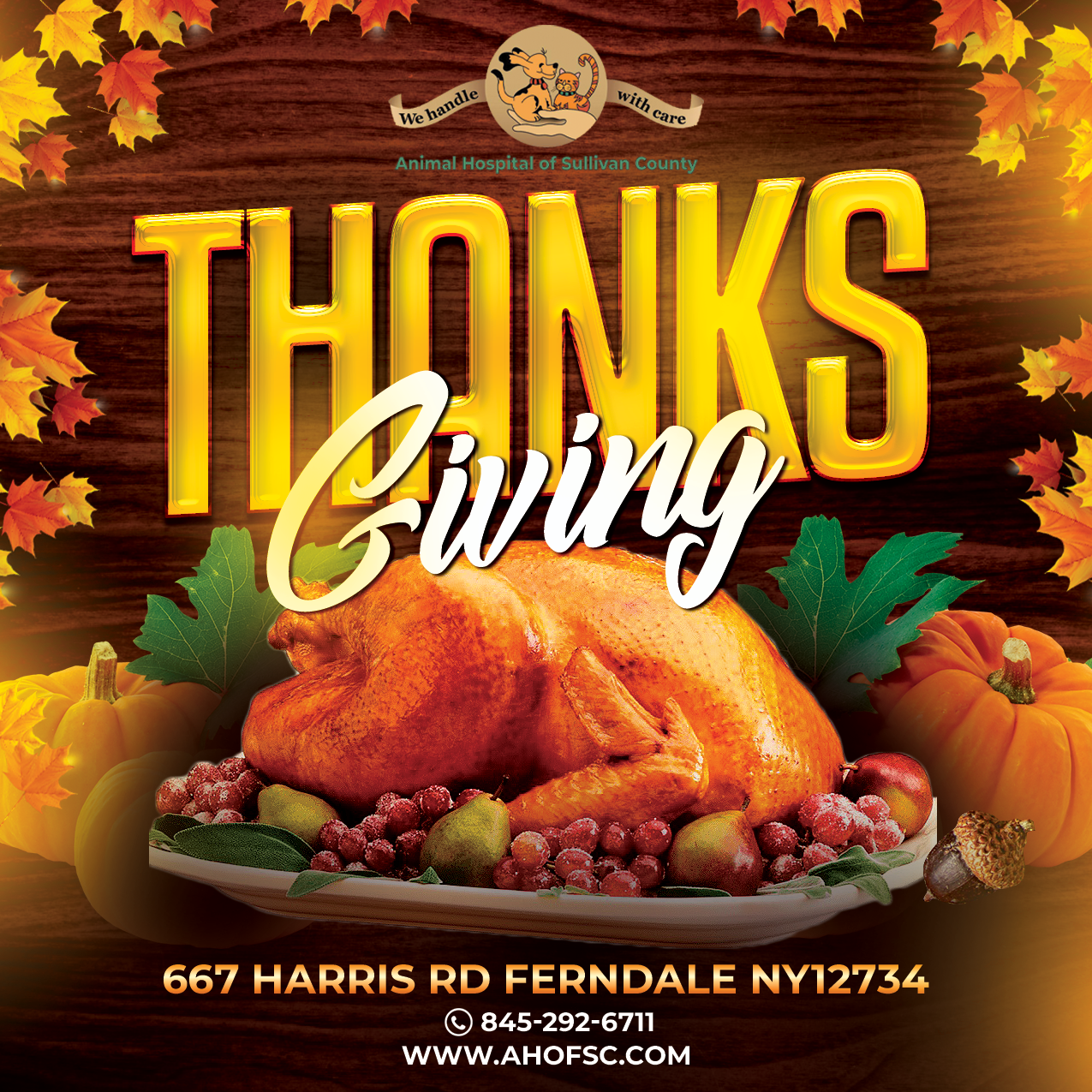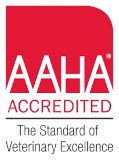
Thanksgiving
Thanksgiving is so much better with teeth!
I know, I know…it’s hard to even READ the word ‘Thanksgiving’ right now. We’ve just gotten past an incredibly eventful Halloween, after all, and Christmas decorations have already spread like pollen throughout retail stores across the land. (And no, I’m not feeling guilty about not starting to decorate yet.)
But Thanksgiving is coming anyway, so it’s better to face it with a plan than to let it sneak up on us and make the last week in November that much more hectic. (And no, I’m not feeling guilty about not starting a menu yet.)
Now, you might recall that—on this very blog last year—we went over some basics regarding your pets and the cornucopia of foods that profligate at this time of the year. (Feel free to scroll back to the blog from November 2023 for the full treatment.) Some of the highlights:
· If you must give your puppies turkey—and small amounts are okay—make sure it’s cooked plain and free of spices, skin, and/or fat.
· Holiday desserts are a hard NO for your pets.
· Keep the garbage bags out of your pet’s sphere of influence; the LAST thing you need is for Freckles to attack the turkey carcass and chomp her way into a potential choking hazard.
There’s more, but—again—a quick scroll over to last year’s blog will get you right up to speed.
So, what should we focus on this year? I say that we pay attention to our furry friend’s teeth. (And yes, I would feel guilty if I didn’t advise this.)
Let’s face it…life in general—and Thanksgiving in particular—is a lot easier with a healthy set of chompers. This holds for those of us of the two-legged persuasion as well as those four-legged furballs we celebrate holidays with.
So…how can we keep our animal companion’s teeth healthy and ready to tackle any (animal friendly) holiday feast?
Well, one of the first and best things we can do is to brush your pup’s teeth.
I know, I know…a toothbrush for DOGS?
Well, yes…
Okay, you might not have to brush Ozzy’s teeth daily, but a few times a week is certainly recommended. Of course, the million-dollar question is HOW?
And that’s a good question, given that most canines love getting their teeth brushed as much as they love getting their nails trimmed…which is another way of saying they HATE it…
So, start with a toothpaste formulated specifically for dogs. (Do NOT use the human variety.) They might like a peanut butter flavor or some version of beef or chicken. Get Ozzy used to licking a bit of the toothpaste as a treat, then gradually (and patiently) introduce a small toothbrush into the routine. As Ozzy gets more used to the idea, you’ll find that he’s much more willing to stick with his newly-acquired dental hygiene habit.
Another good practice is using dental wipes for dogs. True, the wipes aren’t as effective as toothbrushes for getting into the nooks-and-crannies of Pasta Bowl’s chompers, but they do an efficient job of wiping away plaque on a tooth’s surface. Again, getting the wipes into Pasta’s mouth will be a challenge at first—one best met with patient perseverance—but, with time, your fluffy friend will get used to the idea. (And alternating wipes with gentle but more vigorous toothbrushing may be the key to keeping Pasta’s mouth fresh while remaining his favorite human.)
In between brushes and wipes, certain dog chews are great for helping clean Oxford’s teeth. You may wish to check with your veterinary professional as to which dog chews are the best for your pup, but—in general—quality chews help a great deal to scrape plaque off. Also, chews like bully sticks—or chicken strips or cow ears, for that matter—feature enzymes that are essential in maintaining Oxford’s dental health. (If you’re trying to limit Oxford’s caloric intake, there are rubber or nylon chews that work as well.)
Certain dog treats are designed to eliminate plaque, and some have additives that are intended to help freshen up Bonkers’s breath. Again, check with your veterinary professional for recommendations. Treats such as these are a tasty and easy addition to your pet’s routine…and are generally more appreciated than brushing and/or wiping. (But treats should not be used as a substitute for either.)
A final strategy is, of course, scheduling a periodic, thorough cleaning by your veterinary professional. Yes, this can cost a few bucks…but not as much as it will cost to repair dental issues after they have become dangerously manifest. Check with your veterinary professional regarding the recommended frequency of these excellent treatments for your animal friend.
Now…how might you know if Crackers might be in need of dental care?
One of the first signs is, of course, significantly bad breath. Sure, under normal circumstances, Crackers’s breath isn’t something you’re bound to find in a scented candle. But…it shouldn’t gag you. If it does, that’s a very good sign that there is an issue that needs to be dealt with sooner rather than later.
If your doggie’s teeth are discolored, that’s another cause for concern. Also, check out the condition of Antler’s gums…Are they swollen? Bleeding? Might there be a nasty-looking abscess? You’ll want to deal with this pronto.
Excessive drooling might also be a warning sign. Or Antler’s eating habits might change…and she may not want to play with her favorite chew toys anymore. Is any of this happening? Then have her checked out as soon as possible.
Untreated dental issues are serious business, which can lead to tooth loss and actual life-threatening bacterial issues. We owe our furry friends a better life than that. So, let’s…well, BITE the bullet, and commit to brushing, wiping, and otherwise caring for our pet’s teeth. Thanksgiving will be that much better for us all. (And no, I’m still not guilty about not starting a menu yet. But check back with me in about two weeks.)
Dr Barbara J Bodolosky DVM
Animal Hospital of Sullivan County
667 Harris Rd
Ferndale NY 12734


